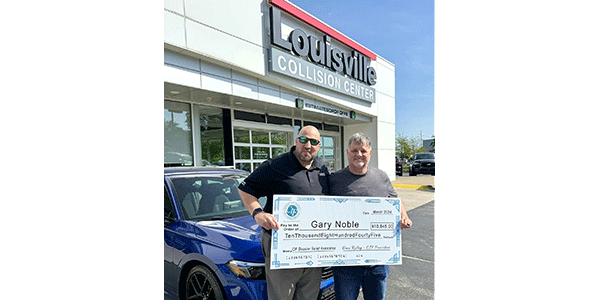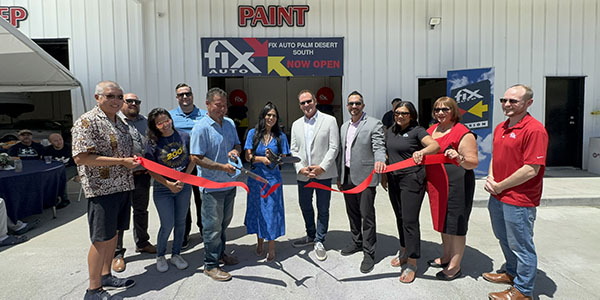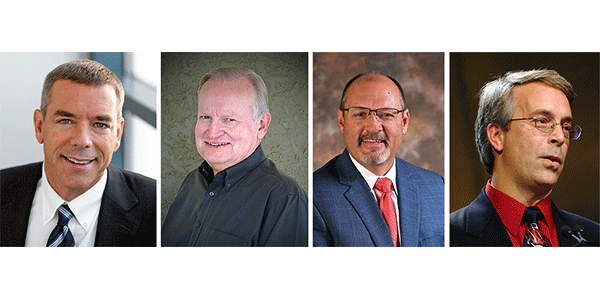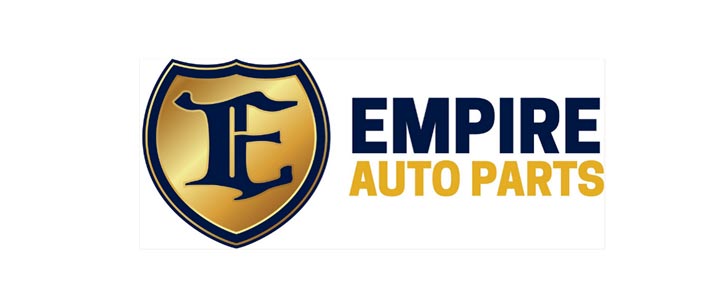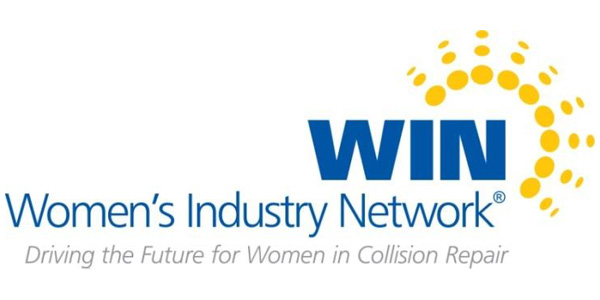The CAPA sticker is just a way for insurers to legitimize aftermarket crash parts.
CAPA-certified parts are actually not tested at all. CAPA just says they are.
CAPA doesn’t actually exist.
These are just some of the things I had heard about CAPA before visiting Intertek, the Grand Rapids, Mich.-based company that conducts all of CAPA’s testing. And now, well, I can say all that information is poppycock.
CAPA, of course, is the Certified Auto Parts Association, the non-profit organization established in 1987 to develop and oversee a test program to ensure the suitability and quality of automotive parts. The event was a media tour on March 25 where managing editor Hannah Schiffman and I witnessed firsthand the kind of tests aftermarket parts go through to achieve (or not achieve) CAPA certification.
“Overcoming [the perception that] CAPA rubber-stamps poor quality parts so insurers can ram them down repairers’ and consumers’ throats has been a huge challenge,” said CAPA Executive Director Jack Gillis.
Gillis admitted that when he was first hired by CAPA, he thought he was going to become body shops’ best friend because he was going to “clean up parts,” but the “attacks” and “emotions” shocked him.
So Gillis decided to find the most critical collision repairers possible and show them what CAPA was doing and ask them to suggest what CAPA needed to change. They went to the source, Taiwan, and Gillis found out several shocking things.
“[The manufacturers] said they couldn’t sell [the parts] fast enough,” Gillis said. “I told them you’ll never sell these in the U.S, but they begged to differ. So shops were saying they didn’t use [aftermarket parts] and hated them, but we found that they were putting a lot of them on vehicles.”
Thus, CAPA has a credibility issue with manufacturers. “If distributors are willing to buy so-called ‘bad’ parts, why spend more money and time to improve them?” Gillis explained.
So manufacturers have few incentives to participate in CAPA certification. When they do participate, Gillis said, it’s because they want to be ready in case the U.S. starts to require quality controls and better parts through legislation or market demand.
He also found out that the manufacturers had never been told by their end customers that there were fit problems.
Gillis was also determined to even out the number of repairers and insurers on CAPA’s Board of Directors. Initially, there had been only one repairer, but today there are three insurers and three repairers.
One of the major issues Gillis still deals with is manufacturers and distributors that don’t see the reason to certify parts because the fact that many are not certified hasn’t harmed sales whatsoever. And repairers haven’t shown that they care about installing CAPA-certified parts.
“Some repairers tell me they install CAPA-certified parts,” Gillis said. “They specifically request CAPA-certified parts from their suppliers, but when the parts come in, they don’t check for the CAPA sticker. So I guarantee you that most of those parts they’re installing are indeed not CAPA-certified. No one is checking.”
Gillis has had representatives from the California Autobody Association, the Society of Collision Repair Specialists and the Automotive Service Association also tour Intertek, some of whom he says had the attitude that CAPA was a “scam” and they were going to prove it. But after observing the rigorous process by which parts become CAPA-certified, he said they walked away “enlightened” and saying, “I didn’t know this.”
|
CAPA By the Numbers
• Budget: $10 million • Funding: 30% comes from insurers, 70% manufacturers • 20% of aftermarket parts are CAPA-certified • 41% of manufacturers don’t produce any CAPA-certified parts |
A Look Back
Addressing why CAPA was created, Gillis said repairers created the market by including non-OEM parts on their estimates when the manufacture of those parts was booming in the 1970s and ‘80s. When insurers found out about these parts, they realized it was a great way to save cost. And so when insurers starting cutting in on shops’ parts profits, that’s when Gillis said repairers started complaining about the quality and safety of these parts.
“When you got paid $400 for a $50 [aftermarket] part, it was great,” Gillis stated as a hypothetical example. “If the insurers had said, ‘We’ll pay $200 for the $50 part,’ no complaints would have been heard. But instead they wanted to pay less than that.”
Due to the complaints about safety, insurers created CAPA in order to be able to distinguish between good and bad parts.
“You can’t just look at a part and know if it’s the right material and that it’s going to perform the way it should,” Gillis said. “CAPA is a tool to let people know what parts are quality.”
A Guided Tour
Walking around Intertek, which tests everything from toys to car parts for a wide range of industries worldwide, we saw lots of people in lab coats who proved to me that a chemistry degree from college actually could lead you to a job.
Hoods were being tested for primer performance, thickness, welds, adhesives and tensile strength. OEM parts were being broken down and analzyed, then compared to their aftermarket counterparts. Bumper covers were sealed in a special booth for several hours to test their performance in extreme heat and cold, from -30º C to 80º C.
In strength tests, lab technicians were measuring how much pressure materials could handle before they failed. There was even a 100-foot darkened tunnel used to test headlamps’ performance at different angles.
When a non-certified aftermarket bumper reinforcement bar was tested, it was found to have half the number of welds as its OEM equivalent and was made from a different type of metal.
For plastics tests, technicians sought melting points, chemical composition and impact strength. To create a standard for a bumper absorber, vehicles were rammed into barriers at 6 mph. In a video we saw, the OEM absorber flattened upon impact but then sprung back into shape, while the aftermarket absorber shattered into pieces. The manufacturer had claimed it was made from the same material as its OEM counterpart, but the CAPA testing proved otherwise.
We also toured a garage-like facility where “pristine” cars are rented from the public so that parts can be test-fitted on them. Marks are made on the vehicle as testing points based on original parts, then the aftermarket parts are installed to see if the test points line up. For example, they can determine if a fender is sitting too high, whether the body lines match up, etc.
Legislation Is Key
Gillis wrapped up the tour by emphasizing his belief that CAPA protects repairers and consumers from an “OEM monopoly.” Also, that legislation is the best way to get manufacturers to comply with CAPA standards for quality.
“If you’re still selling the product, why get certified?” Gillis said. “That’s why I’m working toward legislation to make CAPA certification mandatory.”






